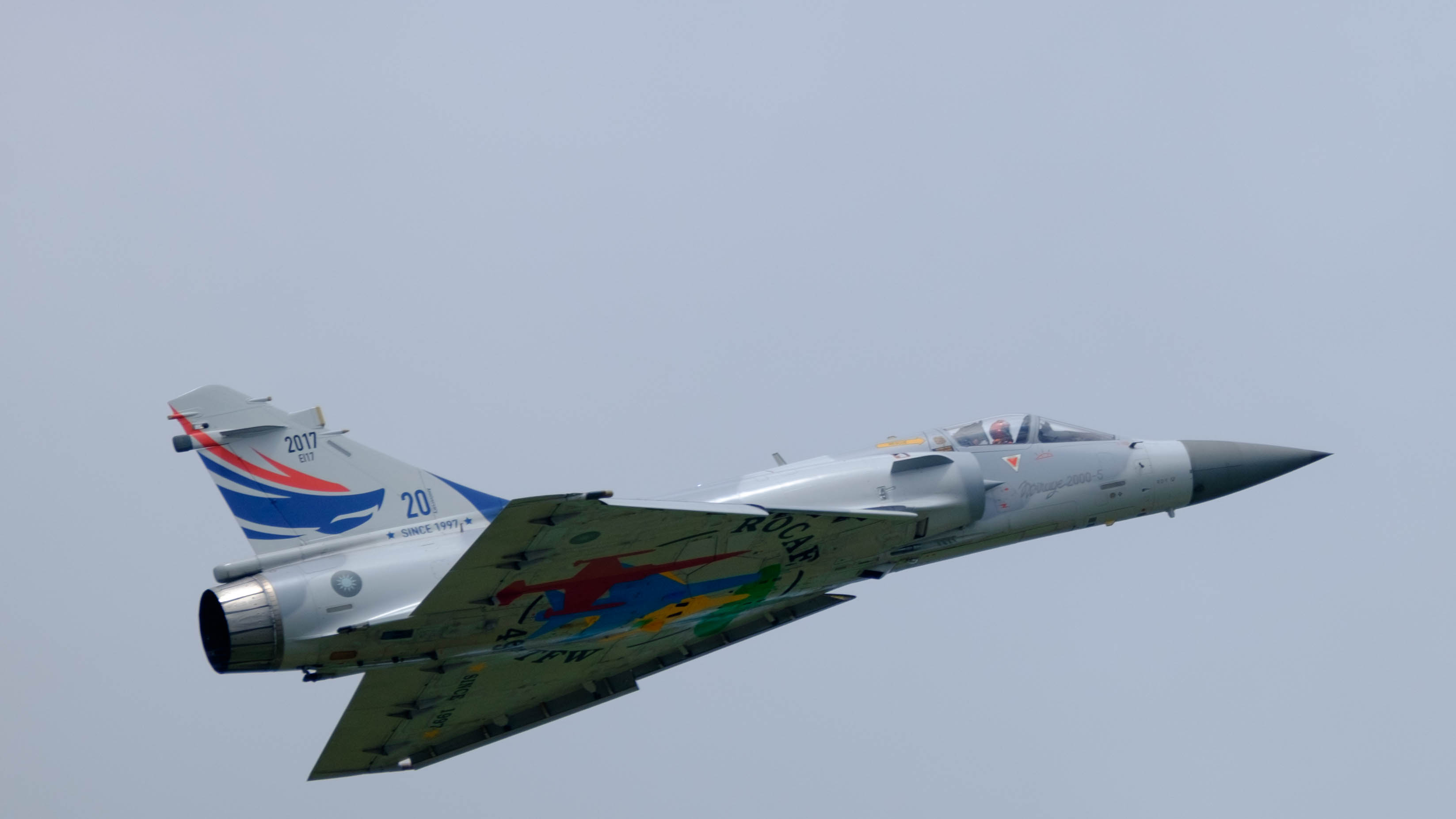The Ukrainian Air Force lost its first French Mirage 2000-5 in a crash last week, causing a massive setback to its air defense missions. Intriguingly, the loss is being openly mocked and celebrated by Chinese military bloggers.
“Unfortunately, we lost our combat aircraft. A French aircraft, very effective, one of our Mirage jets,” the Ukrainian President Volodymyr Zelensky said in an address early on July 23. “The pilot managed to escape, and it was not shot down by the Russians,” he added.
The Ukrainian Air Force put out a more detailed statement saying: “The pilot reported a failure of aviation equipment to the flight director. He then acted competently, as is expected in crises, and successfully ejected. The search and rescue team found the pilot, and his condition is stable. There were no casualties on the ground. A special commission has been appointed to establish the causes of the aviation incident.”
The incident marked a big blow for the Ukrainian military, which has so far lost at least four F-16s. The first F-16 crashed shortly after delivery in August 2024, followed by three additional incidents, the most recent of which occurred in late June 2025.
While Ukraine has attributed these crashes to technical failures, Russian sources claim that the Ukrainian combat aircraft were hunted down by their air defense systems.
Since Ukraine has received only a small number of these Western-origin combat aircraft, every loss comes as a massive setback to the country’s air defense capability, especially at a time when Moscow has intensified its aerial strikes in recent times.
The Mirage 2000-5 is a fourth-generation jet and belongs to the same class of aircraft as the F-16. Both jets have been deployed for air defense and combat patrols.
Strategically, the Ukraine losses are good news for Russia, especially since the latter is further advancing inside Ukraine and intensifying aerial strikes. However, they are being cheered the loudest by Chinese military bloggers.
Why Are Chinese Bloggers Cheering The Mirage-2000 Crash?
A Chinese military blogger wrote in local media: “A Mirage 2000 fighter plane fell, and the fire rushed to the sky! It’s not an exercise, it’s not fake news, it’s live big news! As soon as the news broke out, it went viral all over the Internet, and the explosion made people sweat.”
Mocking the Mirage 2000-5, the article further stated that the French aircraft, which had been the mainstay of the Ukrainian Air Force, was turned into scrap iron.
“To put it bluntly, it’s not strange that cannonballs fly wildly on the battlefield every day, but it’s a Mirage 2000 that fell, which is not a small issue! This aircraft is not an ordinary toy in the hands of Ukraine, but a real weapon to destroy Russia!”
“Looking back, the lack of Mirage 2000 in the Ukrainian army is like a broken leg, and it will be more difficult to fight in the future! You should understand that in modern warfare, especially in air power, once a top-tier fighter jet falls, the entire strategy collapses, and the morale of the Ukrainian frontline soldiers plunges”, the article read.
At first glance, the article may appear to be a testament to pro-Russia sentiment among Chinese netizens. However, the reality is somewhat different.
India and Taiwan — the two countries with which China has a territorial conflict — operate the Mirage 2000. Both countries are expected to extensively deploy the French 4th-generation supersonic aircraft in the event of a potential conflict with Beijing.
Even after nearly four decades in service, the Mirages remain one of the mainstays of the Indian Air Force (IAF), with Gwalior serving as their home base.
Before the induction of the Rafales, the Mirage-2000 was by far the most preferred and potent Indian jet for performing precision strikes deep in enemy territory. The French Mirage has been a reliable and battle-tested aircraft for the Indian Air Force since its induction in 1985. With upgrades, the IAF will continue to use the jets until 2040.
However, the tenor of the Chinese article was largely focused on Taiwan, which is considered a renegade Chinese province. China has made no bones about its intentions to invade the self-ruled island state using force.
A crucial part of this article puts in perspective the reason behind Chinese jubilation: “What’s more funny is that Taiwan’s media – to put it bluntly, those gossips that are pro-democracy – heard the sad news, and their hearts were broken. They cried on the Internet, as if the sky had collapsed.”
The Republic of China, also known as Taiwan, operates two fighter jets that Ukraine operates: the Mirage 2000-5 and the F-16, which are likely to be deployed against the Chinese People’s Liberation Army Air Force (PLAAF) in the event of a conflict.
The “misery” of Ukraine’s western-origin jets, F-16s, and now Mirage-2000 is being seen as a warning to Taiwan.
The F-16 is being upgraded to the Viper standard, which represents a significant upgrade for the Fighting Falcons operated by Kyiv’s forces. However, the Mirage 2000-5 is no longer in production, making its upgrade an extremely expensive endeavor.
Taiwan and France have a maintenance service agreement that is set to expire in 2026. However, the French manufacturer claimed to have requested a hefty price for the refurbishment.

The Chinese military bloggers frequently exploit incidents globally to discourage and mock the Taiwanese military in what seems to be a sustained psychological warfare by China. For instance, they have used crashes to highlight that these jets were outdated and unreliable.
In May 2025, Chinese bloggers used Pakistan’s claims about downing three Rafale fighters during the May Indo-Pakistan clash to talk down on Taiwan’s Mirage 2000-5 fleet, as the Rafale is a successor of the Mirage.
At the time, some Chinese military bloggers said that the Taiwanese military must be alarmed by how well the Chinese fighter jets performed against Western equipment, including cutting-edge Rafale fighters..
The Chinese bloggers have chosen to focus on the shortcomings of the ageing Mirage 2000-5 to underscore why the aircraft crashed in Ukraine. It states, “Professionally, there is a technical pit behind the crash of Mirage 2000. This thing was designed in the last century. Although it has been modified and upgraded, the old man can’t help but toss on the battlefield.”
It is no secret that Taiwan has repeatedly questioned the feasibility of its Mirage 2000-5 fleet against China’s modernizing air force, primarily due to the aircraft’s age, high operational costs, and China’s advanced fighter jets. In 2023, Taiwan’s Defense Minister Chiu Kuo-cheng noted that while the Mirages still perform well, “over time,” their age will pose issues.
Taiwanese officials acknowledge that the Mirage 2000-5s’ participation in contemporary multi-domain operations is limited by their inability to integrate with Taiwan’s C4ISR network and launch ground attacks.
Retired deputy commander Zhang Yanting and other former authorities have voiced doubts about the Mirage 2000-5’s long-term sustainability. Approximately twenty-five years old, the airframe requires expensive maintenance ($28,500 per flying hour) and is not very capable of competing with China’s cutting-edge fighters, such as the J-10C, the J-16, and the formidable J-20.

Taiwan is committed to maintaining the fleet’s operability in the future by investing US$340 million in engine and missile spare parts in 2024, ensuring readiness. However, while the Mirages remain critical for rapid interception due to their climb rate and are often deployed against Chinese ADIZ incursions, rumors of decommissioning persist, with some suggesting replacement by F-16Vs or indigenous fighters.
Moreover, the Mirage 2000 also has limited integration with the F-16V due to differences in avionics, data-link systems, and Taiwan’s command, control, communications, computers, intelligence, surveillance, and reconnaissance architecture, which poses more difficulty.



